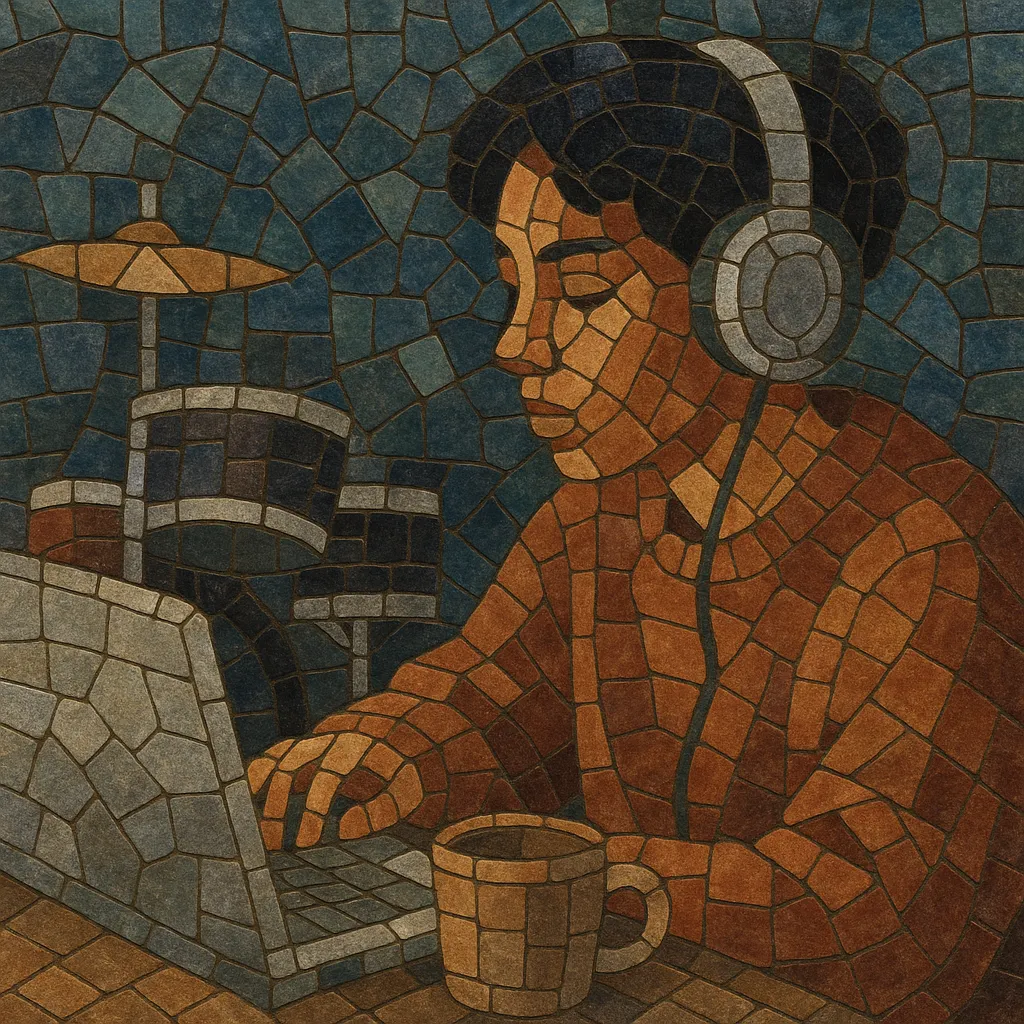
Lo-fi beats is a mellow, largely instrumental microgenre that blends hip hop drum programming with jazzy harmony and a deliberately "imperfect" sonic patina. Typical tracks feature gently swung drums, warm Rhodes or piano chords, soft bass, and textures like vinyl crackle, tape hiss, and room noise.
Songs are loop-based, short, and unobtrusive—designed for background listening while studying, working, or relaxing. The tempo usually sits around 60–90 BPM, the frequency spectrum is softened with low‑pass filtering, and the overall mix is intentionally understated. The result is a cozy, nostalgic atmosphere that prioritizes mood over virtuosic display.
Lo-fi beats draws heavily from the instrumental side of hip hop and jazz-rap. Beatmakers such as J Dilla and Nujabes popularized laid-back, sample-driven grooves with swung drums, dusty textures, and jazzy harmonies. Though these artists did not use the label "lo-fi beats," their approach to rhythm, sampling, and vibe laid much of the aesthetic groundwork for the genre.
In the early-to-mid 2010s, platforms like SoundCloud, Bandcamp, and YouTube enabled a community of bedroom producers to share short, loop-based instrumentals with a consistent warm, degraded sound. Curator channels and 24/7 livestreams (often with anime-inspired visuals) helped codify the sound as "beats to relax/study to," bringing huge audiences and a recognizable visual identity.
The hallmark elements—vinyl crackle, tape hiss, soft kicks and snares, lofi piano or Rhodes, and understated bass—became shared norms. Labels and curators promoted producer compilations, seasonal playlists, and artwork-driven releases, encouraging a collaborative, low-ego culture focused on mood over individual star power.
Streaming playlists on major services amplified the genre’s reach, while DMCA policies nudged producers toward original playing and royalty‑free sample sources. During the late 2010s and early 2020s, lo-fi beats became a global background‑listening staple for study and work, influencing adjacent scenes and local lo-fi movements around the world.

